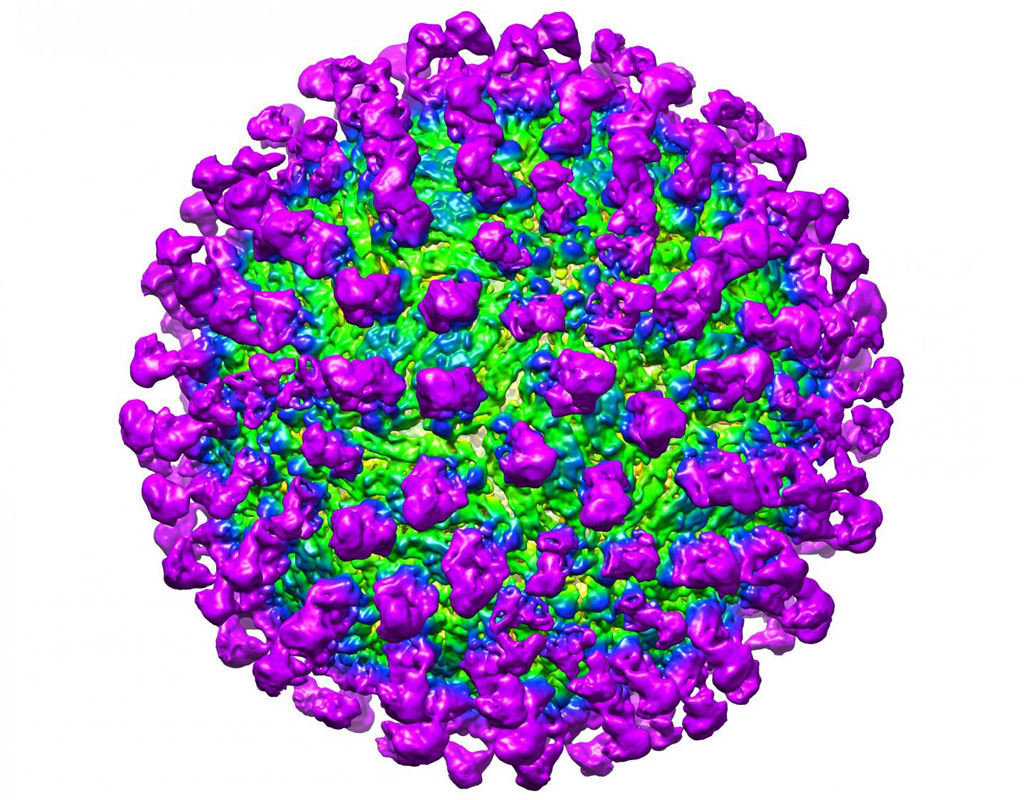Antibody-Zika Virus Interaction Visualized by Cryo-Electron Microscopy
By Gerald M. Slutzky, PhD
Posted on 07 Dec 2016
An international team of molecular virologists used advanced cryo-electron microscopy (cryoEM) techniques to visualize how the potent anti-Zika virus antibody C10 acts to prevent the virus from infecting human cells.Posted on 07 Dec 2016
Researchers have historically relied on NMR and X-ray diffraction techniques to determine the structures of molecular complexes and proteins that play a role in the causes of various disease states. Structural information about a variety of medically important proteins and drugs has been obtained by these methods. Cryo-EM is a complementary analytical technique that provides near-atomic resolution without requirements for crystallization or limits on molecular size and complexity imposed by the other techniques. Cryo-EM allows the observation of specimens that have not been stained or fixed in any way, showing them in their native environment while integrating multiple images to form a three-dimensional model of the sample.

Image: A C10 antibody (purple) interacting with the Zika virus coat (green) (Photo courtesy of Victor Kostyuchenko, Duke-NUS Medical School).
Investigators at Duke-NUS Medical School (Singapore) and collaborators at the University of North Carolina (Chapel Hill, USA) used advanced cryo-EM techniques to examine the mechanism by which the human anti-Dengue virus antibody C10 interacted with Zika virus. Previous studies had shown that in addition to blocking Dengue virus, C10 was one of the most potent antibodies able to neutralize Zika infection.
In this study, the investigators visualized the interaction between C10 and Zika virus under three different pH conditions: pH 8.0, which mimicked the extracellular environment, and pH 6.5 and pH 5.0, which represented the intracellular environment at early and late stages of infection, respectively.
Results published in the November 24, 2016, online edition of the journal Nature Communications revealed that C10 bound to the main (E) protein that comprises the Zika virus coat, regardless of pH, and locked these proteins into place, preventing the structural rearrangements required for the fusion step of infection. Blocking fusion of the virus to the cellular endosome prevented viral DNA from entering the cell and halted the infection process.
"Hopefully, these results will further accelerate the development of C10 as a Zika therapy to combat its effects of microcephaly and Guillain-Barré syndrome. This should emphasize the need for further studies of the effect of C10 on Zika infection in animal models," said senior author Dr Lok Shee-Mei, associate professor in the emerging infectious diseases program at Duke-NUS Medical School.
"By defining the structural basis for neutralization, these studies provide further support for the idea that this antibody will protect against Zika infection, potentially leading to a new therapy to treat this dreaded disease," said contributing author Dr. Ralph Baric, professor of epidemiology at the University of North Carolina.
Related Links:
Duke-NUS Medical School
University of North Carolina














